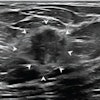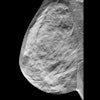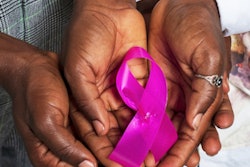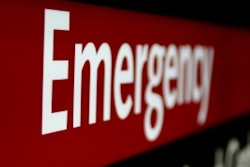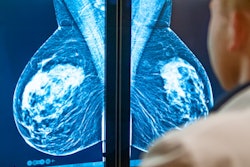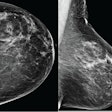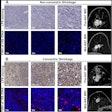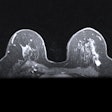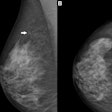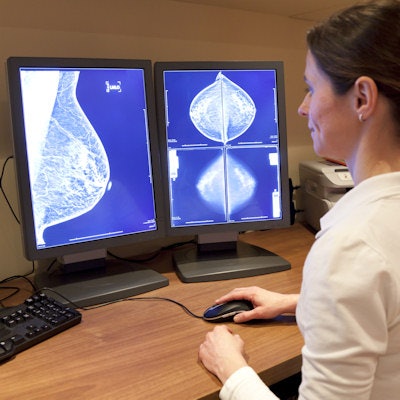
It may be impossible to make up the thousands of mammograms missed in the first half of 2020 due to the COVID-19 pandemic, according to an analysis on November 4 in Health Services Research. The shortfall could lead to several hundred delayed breast cancer diagnoses at just one commercial insurer alone.
A team led by University of Pennsylvania researchers analyzed claim data from Independence Blue Cross, a private insurer that primarily serves southeastern Pennsylvania. The authors estimated there were 45,500 missed mammograms during the pandemic, compared with a normal year.
In a best-case scenario, it would take more than five months to make up for the thousands of missed mammograms. But in the worst-case scenario, which seems increasingly likely with spiking COVID-19 cases, the queue of missed mammograms will continue to grow.
"In the worst-case scenario, providers would need to resort to prioritizing high-risk patients and delaying low-risk patients' screenings for a year or more," wrote the authors, led by Hummy Song, PhD, an assistant professor at the University of Pennsylvania Wharton School.
Song and colleagues pulled deidentified claims and eligibility data from members of Independence Blue Cross, which serves more than 8 million people. They parsed the data of women ages 40 or older who received a mammogram in the first 30 weeks of 2018, 2019, and 2020, then compared mammography rates between March and July of this year with what they would have expected based on prepandemic data.
| Decline in mammograms among Independence Blue Cross members during the COVID-19 pandemic | ||
| Weekly average | Week 15 | |
| Screening mammography | -58% | -99% |
| Diagnostic mammography | -28% | -74% |
The insurer data clearly showed that mammography use plummeted during the COVID-19 pandemic. The authors estimated there were approximately 45,500 missed diagnostic and screening mammograms just from this one insurer alone.
The decline accounted for a 58% decrease in screening mammography and a 28% decrease in diagnostic mammography compared with what would be expected in a normal year. During week 15, the worst week of the year in early April, almost no screening mammograms at all occurred, and diagnostic mammography plummeted by 74%.
The mammography trends aligned with broader pandemic events throughout the year. Mammograms began to decline in week 11 -- the week that the World Health Organization officially declared COVID-19 a pandemic and the governor of Pennsylvania announced school closures and the suspension of large gatherings.
But mammography rates began to pick up again on week 19, the first week in May when nonurgent and elective care resumed. By July, rates for diagnostic mammography were close to their 2018 and 2019 levels. However, at the end of the study period on July 31, screening mammography was still 14% lower than would have been expected.
Assuming a prepandemic capacity of 4,200 mammograms per week, the authors calculated it would take 22 weeks to clear the backlog of mammography cases in a best-case scenario in which capacity expanded to serve 5,760 women per week starting in August.
However, that scenario seems increasingly unlikely as COVID-19 cases continue to rise around the country and some hospitals have once again delayed nonelective procedures. It may be more likely that the rest of 2020 will come closer to the authors' worst-case scenario of 2,630 weekly mammograms, resulting in demand continuing to exceed capacity.
"Health systems have wisely and effectively enacted policies that mitigate the spread of COVID-19, but cancer will not wait for health systems to resume normalcy," the authors wrote. "Delaying mammograms today may lead to increased demand in the future; a combination of increased demand for screening and reduced screening available due to spread mitigation efforts could challenge healthcare systems' capacity for screening."
The authors didn't have data to analyze the net health impact of missed mammograms, but they said there were likely benefits and harms. For instance, the vast majority of women with missed screenings do not have breast cancer, and for those who would have had a negative biopsy, the delay may have spared them an unnecessary quality of life drop.
It's also unknown how missed or delayed screenings will impact women with cancer. The authors' calculated there are 200-320 women in this single insurer population alone who will have a delayed breast cancer diagnosis due to pandemic restrictions. That includes up to 200 women with a missed opportunity for early diagnosis of invasive cancer.
"Our data only represent a fraction of women around the country and around the world affected by altered protocols for the provision of nonurgent healthcare services," the authors wrote. "Given the importance of early detection in the effective management of cancer, the full implications of these changes in screening patterns may not be realized for years to come."
